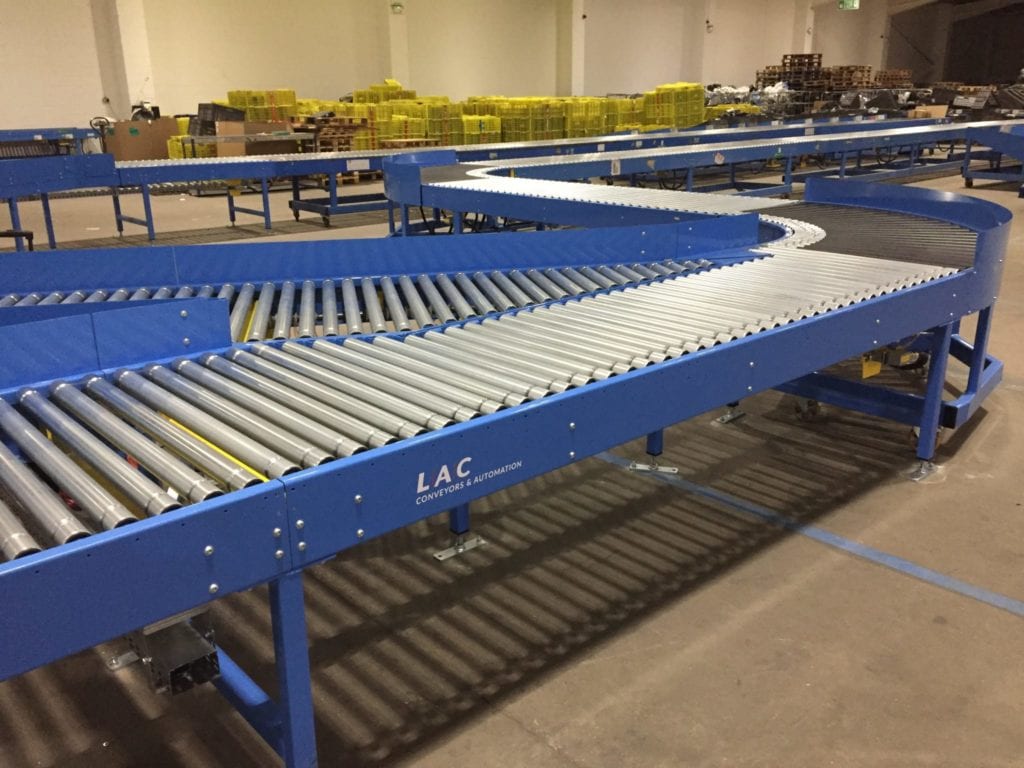The smart Trick of Plant Conveyors And Systems That Nobody is Talking About
Table of ContentsThings about Plant Conveyors And SystemsExamine This Report about Plant Conveyors And SystemsThe Ultimate Guide To Plant Conveyors And SystemsNot known Factual Statements About Plant Conveyors And Systems Some Of Plant Conveyors And Systems
Right here are 20 typical kinds of conveyors. This is most likely what you picture when you think of a conveyor.It is constructed at a minor decrease so parts slide downward on their own. This resembles a gravity roller conveyor other than a chain or belt is utilized to make the rollers transform on their own, so they don't have actually to be built on a decline. In some cases they can also go uphill.
Bucket conveyor systems are utilized to relocate material up and down, by scooping it with a series of pails connected to a belt, chain, or cord. The conveyor relocates the buckets upward, scooping up the material, as well as lugging it to the top prior to unloading it out. explains this sort of conveyor system: "Sphere Transfer tables or conveyors make use of a series of mounted sphere casters to permit unpowered, multi-directional transportation of the item." Essentially, imagine rows of metal rounds on a table that can transform as well as rotate in any instructions.
Top Guidelines Of Plant Conveyors And Systems
As Ultimation describes, "A slat conveyor is generally a two-strand chain conveyor with slats linked to the chain as well as an assisting system for the slats. This develops a smooth surface to which tooling information or components can be mounted to hold parts in the wanted placement." Right here is a video clip of one working. Instead of having rollers or a belt, they have moving chains to carry products. There is an entire family members of conveyors that bring their lots underneath them rather of on top of them.
Occasionally, as with the Power-and-Free Conveyor, they have two tracksone motorized as well as one not mechanized. Turn a trolley conveyor upside down, connect it to the floor rather of the ceiling, and you've obtained an inverted monorail. This conveyor shakes slightly to move bulk product along it.

The Plant Conveyors And Systems Diaries
There are likewise other related gadgets that utilize a chain to drag products such as a tubular drag conveyor. These conveyors utilize a vacuum or air pressure to move material.
These are similar to a roller conveyor other than with small, individual wheels instead of long, cylindrical rollers. Walking Beam conveyors move material incrementally along the conveyor making use of relocating and fixed supports.
If you require aid selecting a conveyor system, let us understand. We have over 35 years of experience working with jobs big (as much as $30 million) and little.
Our Plant Conveyors And Systems Ideas
Introduction The complete guide to conveyor systems on the web. Conveyor System Requirements Types of Conveyor Equipments Exactly How Does a Conveyor System Job?

Tons Ability: Once the system has been laid out as well as offered a pattern, it has to be established what will be the quantity of materials it can carry - Plant Conveyors and Systems. Overloading a system can harm it or cause it to drop in the midst of its procedure. Elements that influence the lots capability are overall size and also bed width in addition to the drive system.
The 8-Minute Rule for Plant Conveyors And Systems

Movement of powdered, granular, and chip kind products can have dust build up, which is considered in system layout and also might necessitate some kind of filtering. As with various other communicating systems, a cautious evaluation of the qualities of the material is required. Arrangement: Communicating systems can be found in a wide array of forms, layouts, sizes, and forms.
Since each system is made to fit an unique application, it would be impossible to cover every one of the different arrangements. What is necessary to recognize is that there are extremely couple of limitations on including a communicating system, despite the application. Drive System: The drive of an automated find this conveying system is the power that relocates products.